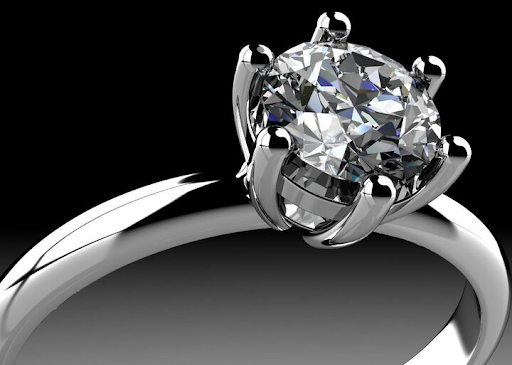Table of Contents
Introduction to Lab-Grown Diamonds
When you hear “diamonds,” what pops into your mind? Sparkly engagement rings, luxurious necklaces, or maybe even that classic image of a diamond as the ultimate symbol of eternal love? Diamonds have been celebrated across cultures for centuries. But today, there’s a modern twist to this age-old gem: lab-grown diamonds. So, what exactly are these sparkling wonders, and how do they fit into the tapestry of culture and tradition?
What Are Lab-Grown Diamonds?
Imagine having a diamond that is chemically and physically identical to one that was formed deep within the Earth’s mantle cultures and lab grown diamonds, but without the million-year wait. That’s the essence of lab-grown diamonds. They are created in controlled environments using high-tech methods that replicate the natural conditions under which diamonds are formed.
How Are Lab-Grown Diamonds Made?
There are two primary methods used to create lab-grown diamonds: High Pressure High Temperature (HPHT) and Chemical Vapor Deposition (CVD). HPHT mimics the extreme pressure and temperature conditions of the Earth’s mantle, while CVD uses a gas mixture to grow diamonds on a substrate. Both methods produce diamonds that are indistinguishable from natural ones to the naked eye.
Cultural Significance of Diamonds
Diamonds have always held a special place in human culture. From ancient civilizations to today’s modern societies, these gems have been cherished for their rarity and beauty. But how do they fit into different cultures around the world?
Diamonds in Ancient Cultures
In ancient times, diamonds were believed to possess mystical powers. For instance, in ancient India, diamonds were considered sacred and were used in religious artifacts. The Greeks and Romans also revered lab created diamonds, believing they were tears of the gods or splinters of fallen stars. Such beliefs highlight how deeply ingrained diamonds were in early cultural narratives.
Diamonds in Modern Cultures
Fast forward to today, and diamonds are not just symbols of status and wealth but are also deeply embedded in popular culture. Think of classic films and celebrities flaunting their bling. In Western culture, diamonds are quintessentially linked to romantic milestones like engagements and anniversaries.
Diamonds in Western Culture
In Western societies, diamonds have become almost synonymous with romance and luxury. The tradition of giving diamond engagement rings, for instance, was popularized in the early 20th century by De Beers’ famous advertising campaigns. This cultural association has made diamonds a staple in Western wedding customs.
Diamonds in Eastern Culture
Contrasting with Western norms, diamonds hold different meanings in Eastern cultures. In places like India, diamonds are often seen as auspicious and are worn for their supposed protective properties. They are also a significant part of traditional wedding jewelry, symbolizing prosperity and eternal love.
Lab-Grown Diamonds and Cultural Perceptions
As lab-grown diamonds enter the scene, they are starting to reshape cultural perceptions. Their rise challenges traditional views and prompts us to rethink the role of diamonds in our lives.
Changing Attitudes Towards Lab-Grown Diamonds
Attitudes toward lab-grown diamonds are evolving. Many see them as a sustainable and ethical alternative to natural diamonds. This shift is partly due to increasing awareness about the environmental and human costs associated with mining natural diamonds. As lab-grown diamonds become more mainstream, they are starting to be embraced by various cultural and social groups.
Lab-Grown Diamonds in Traditional Jewelry
Lab-grown diamonds are making their mark in traditional jewelry sectors, transforming how people view luxury and preciousness.
Impact on Engagement Rings
For many, engagement rings are a deeply personal choice symbolizing commitment and love. Lab-grown diamonds offer a more affordable yet equally beautiful option. This has led to a growing acceptance of lab-grown stones in engagement rings, appealing to those who value both ethical and economic considerations.
Impact on Luxury Jewelry
The luxury jewelry market is also seeing a shift. High-end brands are starting to incorporate lab-grown diamonds into their collections. This change reflects a broader cultural acceptance and a desire to align luxury with sustainability.
Environmental and Ethical Considerations
One of the strongest arguments for lab-grown diamonds is their lower environmental and ethical impact compared to natural diamonds.
Eco-Friendly Aspect of Lab-Grown Diamonds
Lab-grown diamonds are often touted for their eco-friendly credentials. They don’t require extensive mining, which can be destructive to ecosystems. This makes them an attractive option for environmentally-conscious consumers.
Ethical Implications Compared to Natural Diamonds
Ethically, lab-grown diamonds offer a significant advantage. They bypass the issues associated with “blood diamonds”—gems that fund conflicts and human rights abuses. As awareness grows, many people are choosing lab-grown diamonds to ensure their purchases support ethical practices.
The Future of Lab-Grown Diamonds in Culture
So, what’s next for lab-grown diamonds? Their role in culture is still evolving, but a few trends are already emerging.
Predicted Trends
We can expect lab-grown diamonds to become even more prevalent in the coming years. Advances in technology may make them more affordable and accessible, while increasing awareness of their benefits could drive further adoption.
Potential Cultural Shifts
As lab-grown diamonds gain acceptance, they might reshape cultural norms around luxury and commitment. They represent a blend of tradition and modern values, potentially leading to new ways of celebrating milestones and expressing love.
Conclusion
Lab-grown diamonds are not just a modern marvel of technology but a reflection of changing cultural values. As we continue to evolve, so too does our relationship with these gems. They challenge old perceptions and offer a glimpse into a future where luxury, ethics, and environmental responsibility go hand in hand. Whether you’re drawn to them for their sustainability or simply their sparkle, lab-grown diamonds are redefining what it means to cherish and celebrate.

